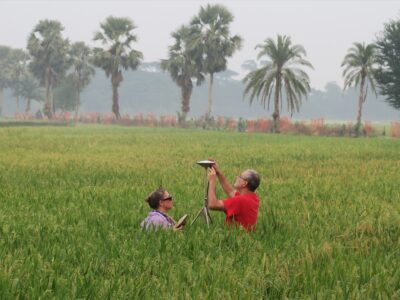
After a search during dive 4576, Scott finally found a suitable site for the VentCam deployment, and later that evening we launched the system overboard for its first trip to the seafloor. The next day, with the help of pilot Bruce Strickrott and pilot-in-training Anton Zafereo, we dove in Alvin to recover the device and position it at a black smoker vent called Bio9. It was a lovely sight to see it shining its light into the darkness as we approached. Intermittently flashing at programmed intervals, it looked like some kind of lunar lander examining a distant world. In a way, I suppose it was.
We used Alvin’s manipulator to carry the VentCam from the landing site over to Bio9, and after only about 30 minutes or so, Bruce had it all set up and ready to record video. If all goes according to plan, it will record 15 seconds of video at 75 frames per second every 10 minutes. I will be able to process this data using an image analysis technique that will tell me how fast the fluid is flowing out of the vent and how the flow is changing over time.

Once we iron out all the wrinkles, we hope to eventually build many of these devices and place them at many vents for long term deployments. By comparing changes in flow rate through different vents in response to events like earthquake swarms, we will begin to unravel more of the mystery of the subseafloor plumbing system, and better understand how heat and chemicals are transferred between Earth’s lithosphere and the overlying ocean. Such information will be critical as we work to understanding how mid-ocean ridge hydrothermal systems support deep sea ecosystems and how they fit into the global climate system. We’ll just take it one step at a time though.



